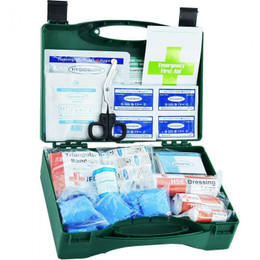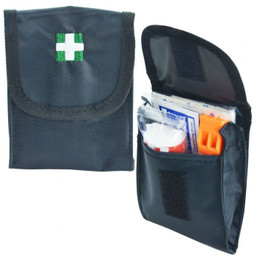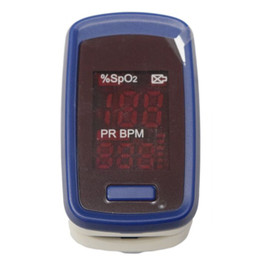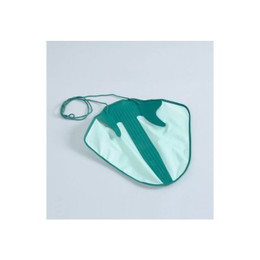Product Description
Supplied in a convenient red carry bag, the Comprehensive First Aid Kit is a 180 piece first aid kit that is ideal for small domestic medical emergencies. It contains more provisions than a conventional first aid kit and has a guidance leaflet as a point of reference for accidents including cuts, burns, broken bones and head injuries. The Comprehensive First Aid Kit is perfect for use at home, for a sports team or taking away on a trip.
First Aid Kit Contents:
- 1 Red First Aid Bag
- 10 7.5 x 7.5cm JFA Sterile Gauze Swabs (2 sterile pouches)
- 1 Crepe Bandage 7.5cm x 4.5m
- 20 Wound Closure Strips (4 sterile pouches)
- 1 Foil Blanket
- 2 Burn Gel Sachets
- 1 Sterile Finger Dressings
- 1 Small Sterile HSE Eye Pad Dressings
- 1 Medium Sterile HSE Dressings
- 1 Large Sterile HSE Dressing
- 20 Large strip, low allergy, latex free, plasters 72m x 22mm
- 40 Medium strip, low allergy, latex free, plasters 72mm x 19mm
- 24 Small strip, low allergy, latex free, plasters 38mm x 19mm
- 4 Adhesive fingertip plasters 60mm x 45mm
- 8 Adhesive square dressings 38mm x 38mm
- 4 Adhesive large patch dressings 72 x 50mm
- 3 Adhesive wound dressing 7.0cm x 6.0cm
- 3 Low Adherent Pad 7.5cm x 7.5cm
- 1 Non-woven triangular bandage
- 1 Conforming Bandage 5cm x 4.5m
- 1 Microporous tape 1.25cm x 5m
- 2 Vinyl Disposable Gloves
- 1 Tough Cut Scissors 15cm
- 6 Assorted Safety Pins
- 20 Alcohol Free Wipes
- 1 Information Leaflet
- 1 CPR Shield
- 1 Tweezers
Where is the Best Place to Keep a First Aid Kit at Home?
Store your first aid kit in a location that is easily accessible to all family members, including children old enough to understand how to use it.
- Kitchen: Many accidents happen in the kitchen, so this is a practical location.
- Bathroom: A common place for minor injuries like cuts and burns.
- Centralised Location: A hallway closet or a central room can be ideal for quick access.
- Consider Multiple Kits: For larger homes, consider having multiple first aid kits in different locations, such as one on each floor or in high-traffic areas.
- Specialised Kits: If you have a garage or workshop, keep a dedicated first aid kit in those areas to address injuries specific to those environments.
What should you have in a first-aid kit at home?
A comprehensive first-aid kit for home use should include items to handle common injuries and emergencies. Here's a list of essential items:
Basic Supplies
- Adhesive bandages (various sizes)
- Sterile gauze pads and adhesive tape
- Antiseptic wipes and antiseptic solution (e.g., hydrogen peroxide)
- Antibiotic ointment
- Tweezers and scissors
- Disposable gloves
- Digital thermometer
- Cotton balls and cotton swabs
- Instant cold packs
- Elastic bandages (ACE bandages)
- Sterile eye wash and eye pads
Medications
- Pain relievers (e.g., ibuprofen, acetaminophen)
- Antihistamines for allergic reactions
- Hydrocortisone cream for itching and rashes
- Burn ointment
- Personal prescription medications (with an extra supply)
Other Essentials
- First aid manual or instructions
- CPR face shield or mask
- Emergency phone numbers, including poison control
- Flashlights and extra batteries
- Blanket or space blanket
What is in a First Aid Emergency Kit?
An emergency first aid kit, designed for more severe or widespread emergencies, should include all the items listed above plus additional supplies tailored for critical situations:
- Additional Supplies
- Sterile dressings for larger wounds
- Splints and/or SAM splints
- Tourniquet
- Trauma shears
- Hemostatic agents (for severe bleeding)
- Saline solution for wound irrigation
- Advanced Medicines and Equipment
- Epinephrine auto-injector (if prescribed for severe allergic reactions)
- N95 respirator masks
- Manual resuscitation bag (Ambu bag)
Emergency and survival items
- Multi-tool (with knife, pliers, etc.)
- Whistle to signal for help.
- Water purification tablets
- High-energy snacks or energy bars
- Basic survival gear (e.g., matches, fire starter, emergency shelter)
Regularly check and replenish your first aid kit to ensure all items are in good condition and within their expiration dates. Customise the contents based on your family’s specific needs and any medical conditions.









